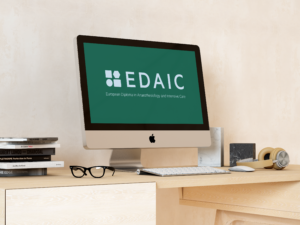Newsletter 2022
Newsletter August 2022: EDAIC - Quo Vadis?
Dr. Bazil Ateleanu MD, DEAA, FRCA, FESAIC
Examinations Committee Chair
ESAIC Board Member

Faced with all of these restrictions and adversities, the Examinations Committee, respecting the Board and Council strategies, adapted swiftly and successfully. Our admirable staff contributed and, in some circumstances, designed new avenues for successfully delivering our much-needed exams.
After facing technological shortcomings in 2020 and 2021, OLA was successful again in 2022. This success resulted from launching our long-awaited HOLA project (Home On-Line Assessment) under significant time pressure. This online exam is now available from the comfort of a personal computer at home over more than 2 weeks, at the candidate’s discretion. From the perspective of the exam organisers, the launch of HOLA allowed the fragmentation of a quasi-simultaneous colossal cohort of 1878 candidates in 11 languages in smaller batches of a few hundred at the time.
Countries that use OLA as part of the National Examination (Argentina, Moldova, The Netherlands) continued to have the classic model of OLA held on a pre-decided date of Friday, April 22, in venues selected by local organisers, with local physical invigilators. Congratulations to the whole OLA Subcommittee, led admirably for many years by Dr Armen Varosyan from Armenia, recently replaced by Dr Octavian Toma from Switzerland, seconded by Dr Malgorzata Mikaszewska-Sokolewicz from Poland and helped by our promising new staff member Vera Morales (Examinations Coordinator).
The Part I examination took place on September 11, 2021. Learning from the previous technical problems with OLA, the Examinations Committee took the safe decision to run the exam in a paper version only in all EDAIC Part I centres. This decision proved to be the correct one, as all Part I centres ran the exam without any problems. Almost 3000 candidates registered for this exam, and 2505 sat the Part I 2021 in 85 centres in 46 countries. We wish to stress that once again, this very happy outcome was only made possible thanks to Part I hosts’ incredible dedication and flexibility, implementation of many complicated measures to ensure conformity to governmental restrictions, the safety of candidates and invigilators alike and maintaining a high level of invigilation.
The same model will be used in September 2022, where 3346 candidates are registered, an all-time record for Part I.
Congratulations to the Part I Subcommittee, led by Dr Nicolas Brogly from Spain, seconded by Dr Krisztina Madách from Hungary and helped by our very reliable staff member Lise Carratala.
Part II probably suffered the most during the pandemic. In a record time, following new Board decisions, all Part II exams were transformed into Online exams in 2021. This trend continued in 2022, with progressive relaunching of physical exams and piloting of hybrid Part II. This new design of online exams proved to be very popular with candidates (especially overseas), and the young generation of examiners, whilst the more senior generation of examiners continue to favour face-to-face exams. It is worth mentioning we beat our previous record from 2020, where we had 1278 registrations; in 2022, we have 1338 registered candidates over 18 exams (9 online, 5 hybrid and 4 F2F). It is important to mention the success of our online exams. It is also fair to mention the gradual shortage of our examiners, now obliged to sacrifice weekend after weekend in front of computers, without the benefit of networking during physical exams. Our exams are extremely popular, some events being fully booked within a few hours! Our Subcommittee continues its sterling work, selecting new examiners, adding new questions to the Database and replacing examiners at short notice.
Congratulations to the whole team, led by Prof. Markus Klimek from The Netherlands, seconded by Dr Joana Berger Estilita from Switzerland, and helped by the very proactive examinations staff led by Rodolphe Di Loreto.
These results were obtained in a period of profound change, with many members of the Committee and Subcommittees being towards the end of their term. A special word of thanks goes to 2 Key Members with outstanding contributions to the exams over many years: Dr Armen Varosyan and Prof. Javier Belda Nacher, Chairs and Senior Examiners and essential Members of the Subcommittees.
Our global expansion continues, with Croatia and North Macedonia joining our exams. Promising contacts were also made in the very few remaining European countries outside EDAIC and in Paraguay, Columbia and Peru.
Despite not being a Subcommittee of Examinations, but an independent entity, the newly constituted Basic and Clinical Sciences Anaesthetic Course Committee (BCSAC Committee) celebrated 2022 with the highest number of participants, 319, again a new record.
Congratulations to the Chair, Dr Estíbaliz Alsina Marcos from Spain, to the Programme Director, Dr Andrea Kollmann Camaiora from Sweden, to the many examiners contributing as lecturers and to Odile Jacquet, our very experienced staff member
Another word of appreciation goes to our Examinations Manager, Hugues Scipioni, who was absolutely instrumental in every success of our exams.
There are many challenges ahead of us. The creation of a new recognition system for the examiners, a new financial package for our exams, potential links with Membership, renewal and expansion of personnel (both as examiners and staff), and update of our IT assets are just a few of them. Maybe the most important challenge is finding the right balance between the desired (and practically guaranteed) expansion of Part I and the limited resources we have, as examiners and staff, for Part II.
With the right guidance and support from our Board and Council, the committee and our great group of examiners and staff, are confident we can take our exams to new and greater achievements in years to come.
[maxbutton id=”1″ url=”https://www.esaic.org/newsletter/” text=”Read the Newsletter” ]










